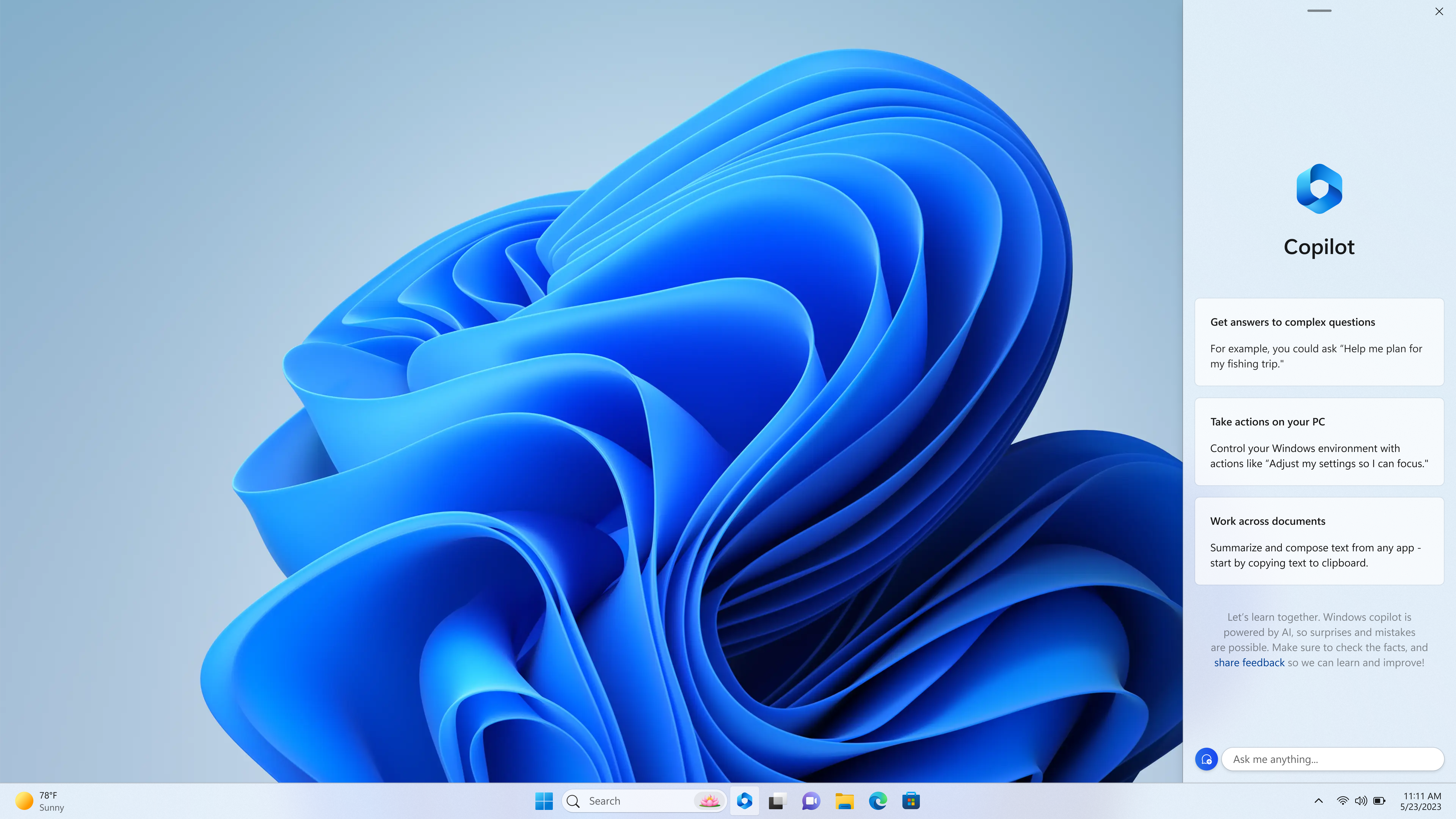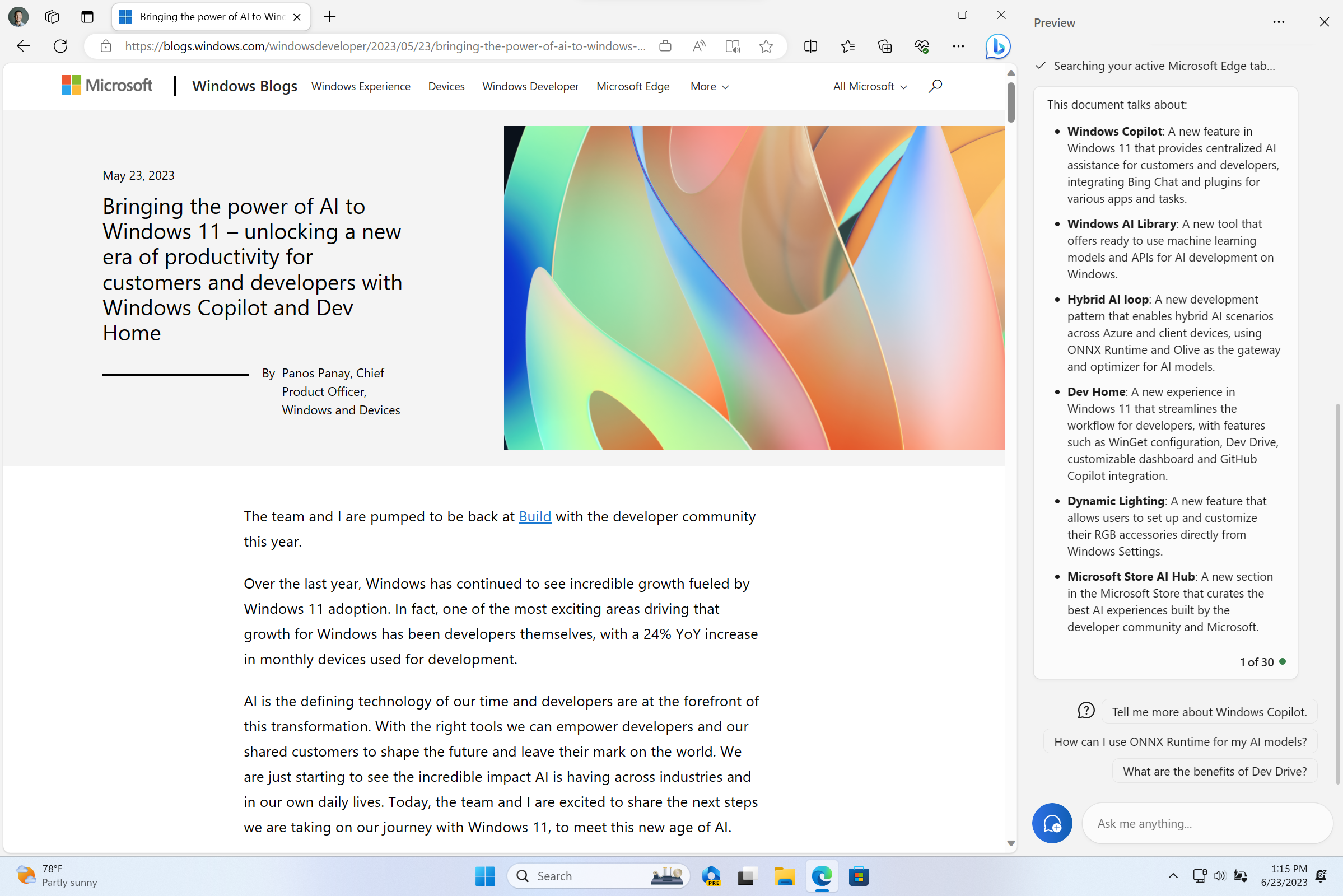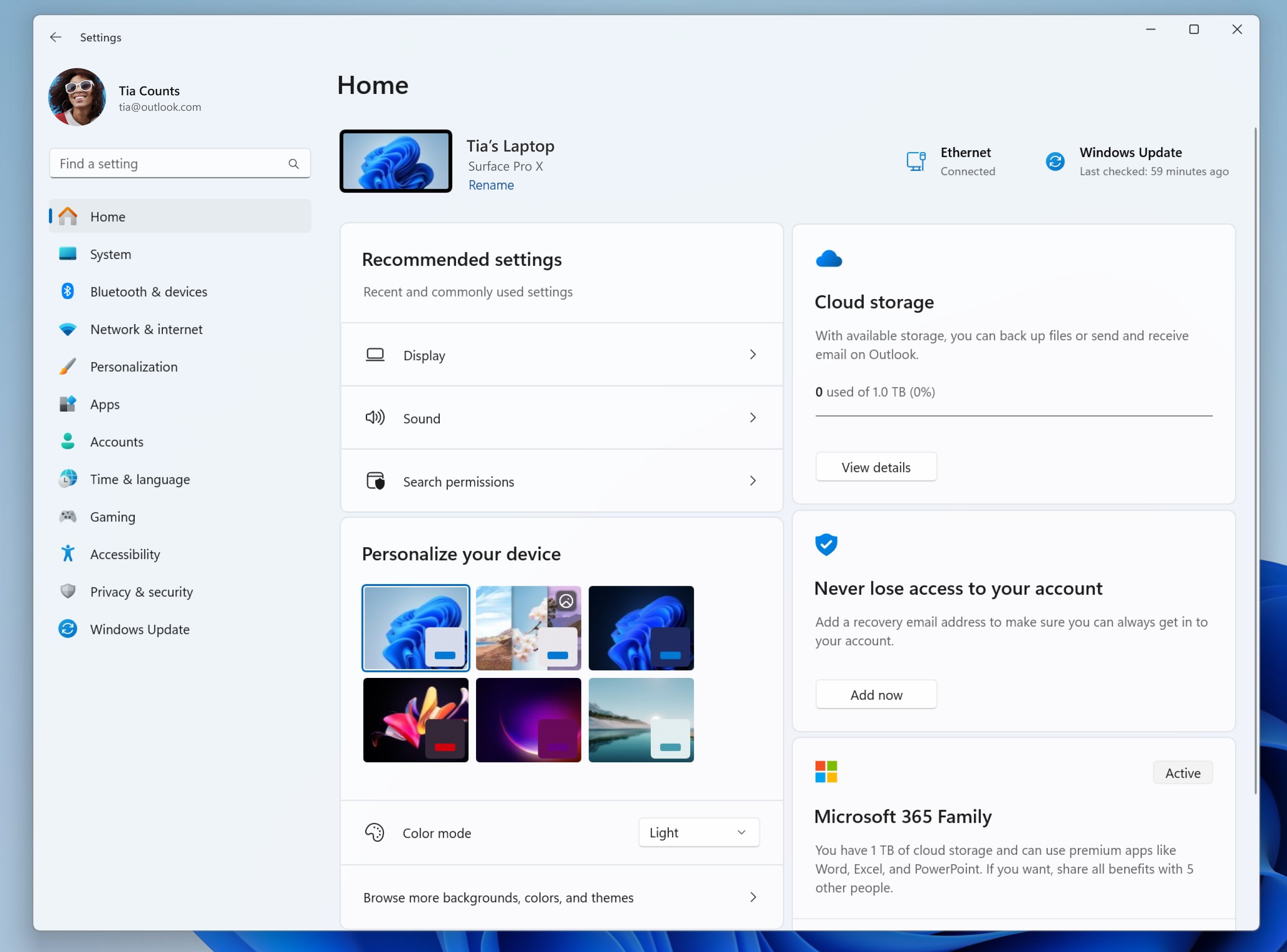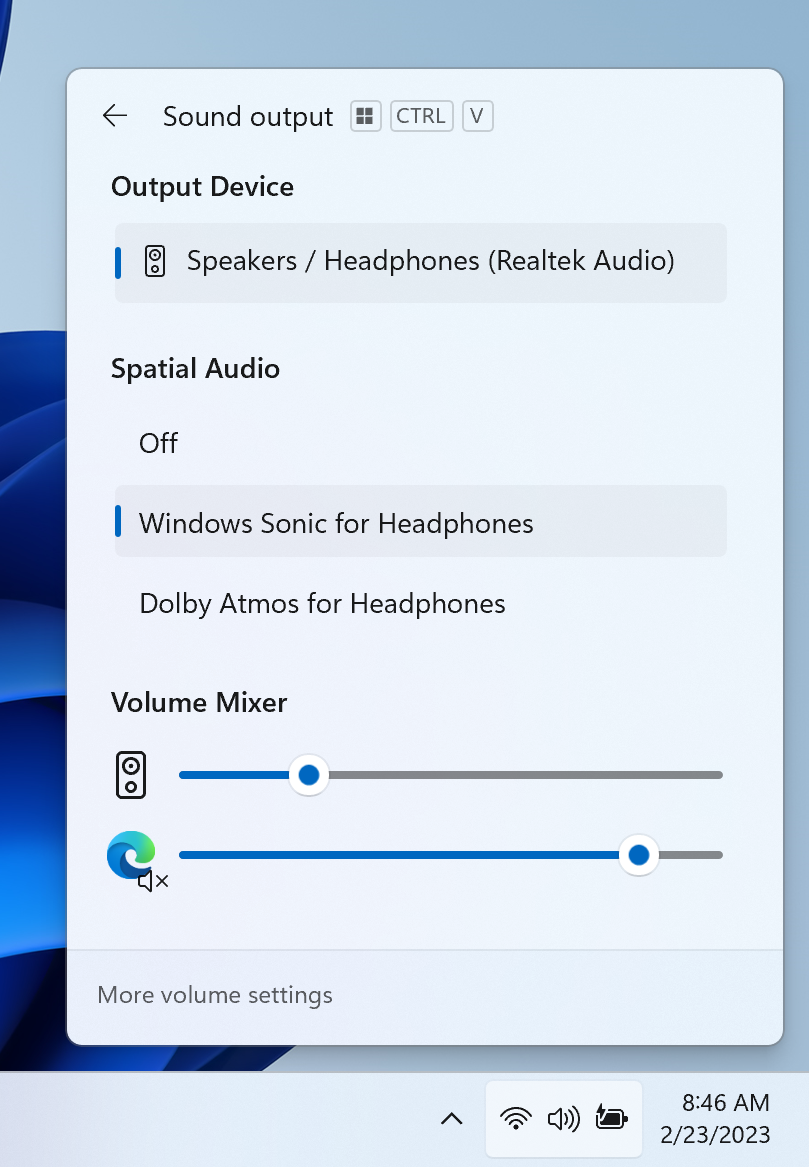It's taken some time, but Windows Copilot is finally available for Windows Insiders to try starting today. Microsoft is rolling out Windows 11 build 23493 to Insiders in the Dev channel, and the headlining feature is the introduction of the company's new AI assistant, simply called Copilot. We've seen Copilot used for Microsoft 365 and GitHub, but this is the most widespread implementation of it yet. The new build includes a lot more changes, too.
An early preview of Windows Copilot
Copilot is obviously the highlight of Windows 11 build 23493, though it's still a somewhat early preview. Right now, it supports some integrations with Windows 11 features. For example, you can ask Copilot to do things like enable dark mode, turn on Do not disturb, or take a screenshot. Thirs-party plug-ins aren't supported yet.
You can also use Copilot for other things you might ask in Bing Chat, which is what this experience is based on. You can ask it to write a story or create an image, as well as any question about information you need to know, or help planning a trip, for example. Microsoft warns that you may also see "recommendations" powered by Bing ads.
Copilot is accessible by clicking the new dedicated button on the taskbar or using the Windows + C keyboard shortcut, which was previously used for the Teams chat integration. It opens as a panel on the right side of the screen, pushing your windows to left, rather than overlapping with them, so it's always accessible and doesn't block other information on screen.
As is typical for Microsoft, however, Copilot is controlled feature rollout (CFR) meaning only select Insiders will be able to try it out. Wider availability should come later.
Settings gets a new Home page
While Copilot is the center of attention here, there are a few other major changes in this build. First off, the Settings app is getting a new Home page, which is where you'll find link to the most important or common settings. The Home page opens by default and contains a few sections, starting with a Recommended Settings card, which is based on your most commonly-used settings, with quick recommendations for the things you use the most.
Other cards include cloud storage, account recovery, Xbox, Bluetooth devices, and personalization. There definitely seems to be a focus on features revolving around your Microsoft account here, but some of these settings are legitimately useful and things you're likely to use frequently. Microsoft says more cards will be added soon, and the Home page will learn based on your usage patterns, so it should show you more relevant content the more you use the app.
Restore desktop apps
Microsoft has been working on improving the backup and restore experience for Windows 11 for the past few builds, and this one also comes with a big improvement. Now, Windows 11 can back up your pinned desktop apps, even those that weren't installed from the Microsoft Store. For apps that were installed through the Microsoft Store, you can click the pinned icon to install it again. If it wasn't, clicking the pinned icon can take you to the developer's website so you can install the app manually.
Support for more archive types
A feature that Microsoft had announced earlier this year at Build was native support for more archive file types, such as .rar and .7z. This feature is now rolling out, and the supported file types include, but are not limited to:
- .tar
- .tar.gz
- .tar.bz2
- .tar.zst
- .tar.xz
- .tgz
- .tbz2
- .tzst
- .txz
- .rar
- .7z
Many of these file formats are very popular for archives, and native support for them is arguably long overdue, so it's great to see it finally roll out. Microsoft says it has also improved archive compression performance in Windows 11.
New volume mixer
Microsoft is also finally bringing a new feature from the Canary channel to the Dev channel, and that's the new volume mixer experience. This new experience lets you change the volume of audio playback for each of your apps with a modernized look without having to go into the Settings app every time. Just like before, you can also control the audio for different playback devices connected to your PC.
This change has been a long time coming, and the lack of a modern audio mixer was something that was frequently pointed out in regard to Windows 10. Windows 11 worked around it by building a volume mixer into the Settings app, but it's not as elegant as the old audio mixer was on previous versions of Windows.
In addition to this, Microsoft has also made it easier to access this volume mixer with a new keyboard shortcut: Windows + Ctrl + V.
Other changes
In addition to the new features and changes above, Microsoft has also made a few smaller improvements to the Windows 11 experience overall. One of them is a new look for the Snap Layouts overlay, where you can see the app icon for your current app inside the area you're selecting, making it clear where that app will be shown on the screen in that layout.
Microsoft has also implemented a new system for apps requesting to be pinned to the taskbar. Now, you'll see a notification when an app wants to be pinned to the taskbar, and you can choose to approve or deny that request, giving you more control over the apps that appear there. The company has also done some work to prevent unrequested changes to your app defaults, such as your default web browser.
Fixes
Of course, as with most builds, this one also comes with an array of fixes for different parts of the experience. You can find those below:
Known issues
Naturally, this build also comes with its fair share of known issues. That's to be expected with any Insider build, but there's a significant list in this build. You can read about all of them below:
As per usual, Windows 11 build 23493 can be downloaded from WIndows Update if you're a Windows Insider enrolled in the Dev channel. You can always join the Insider program if you want to try these and other Windows 11 features in preview, but keep in mind you will be running into problems more frequently. Many or most of these features should be available to the general public with Windows 11 version 23H2 this fall.




